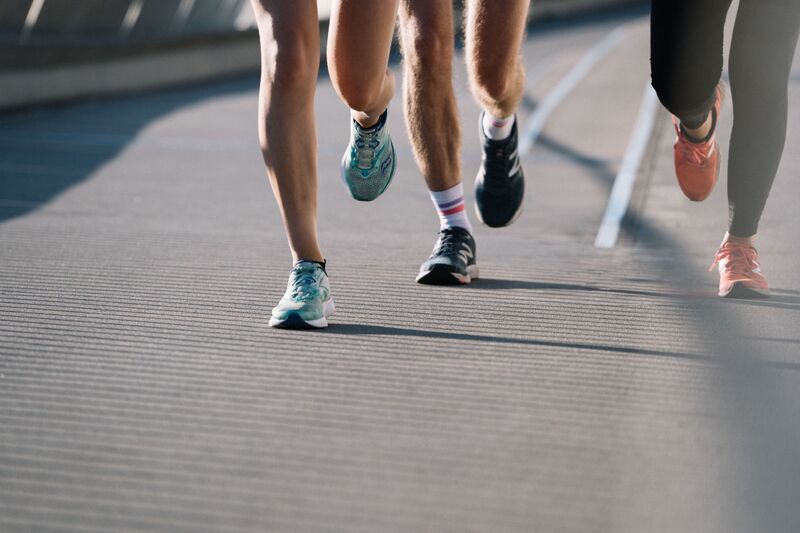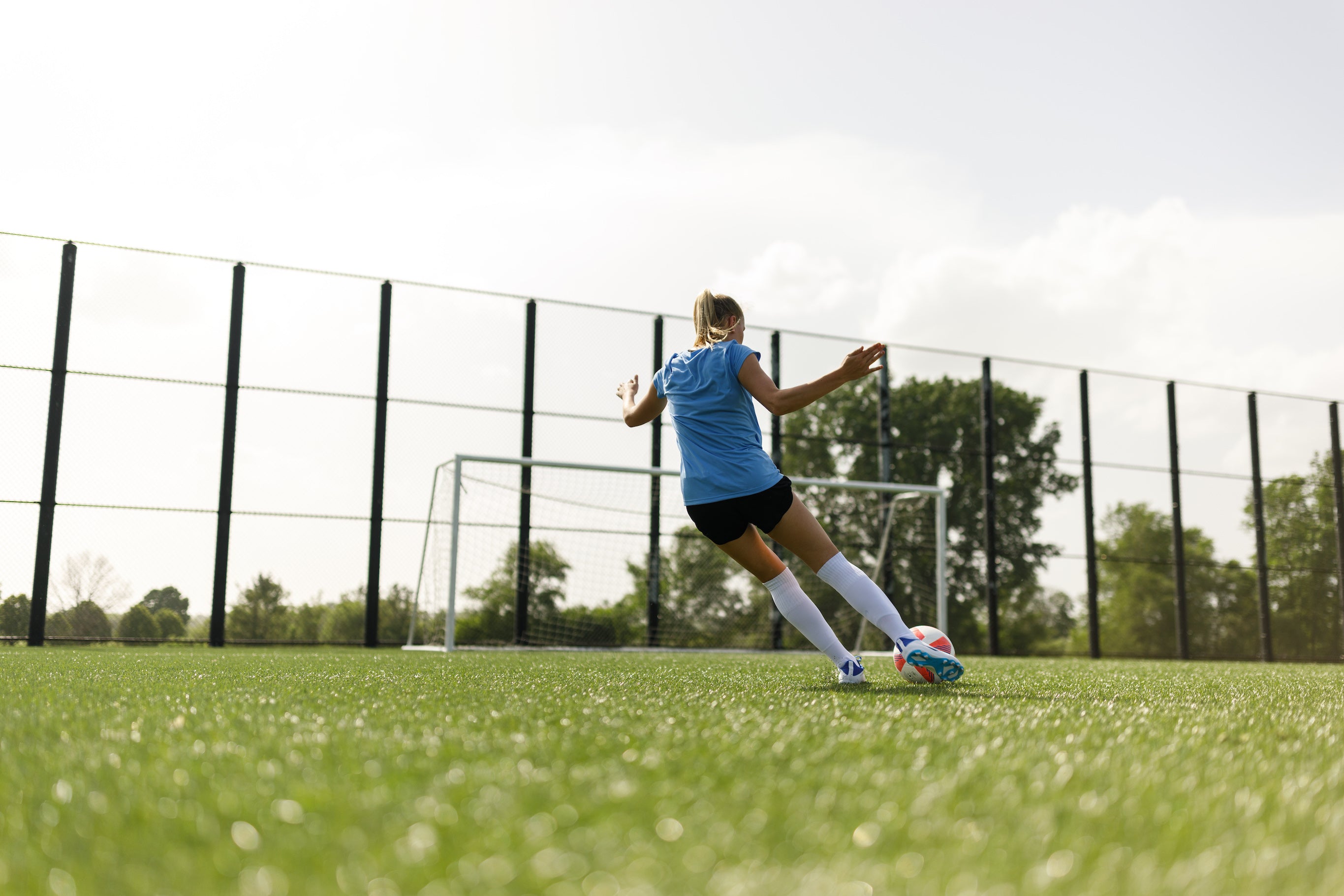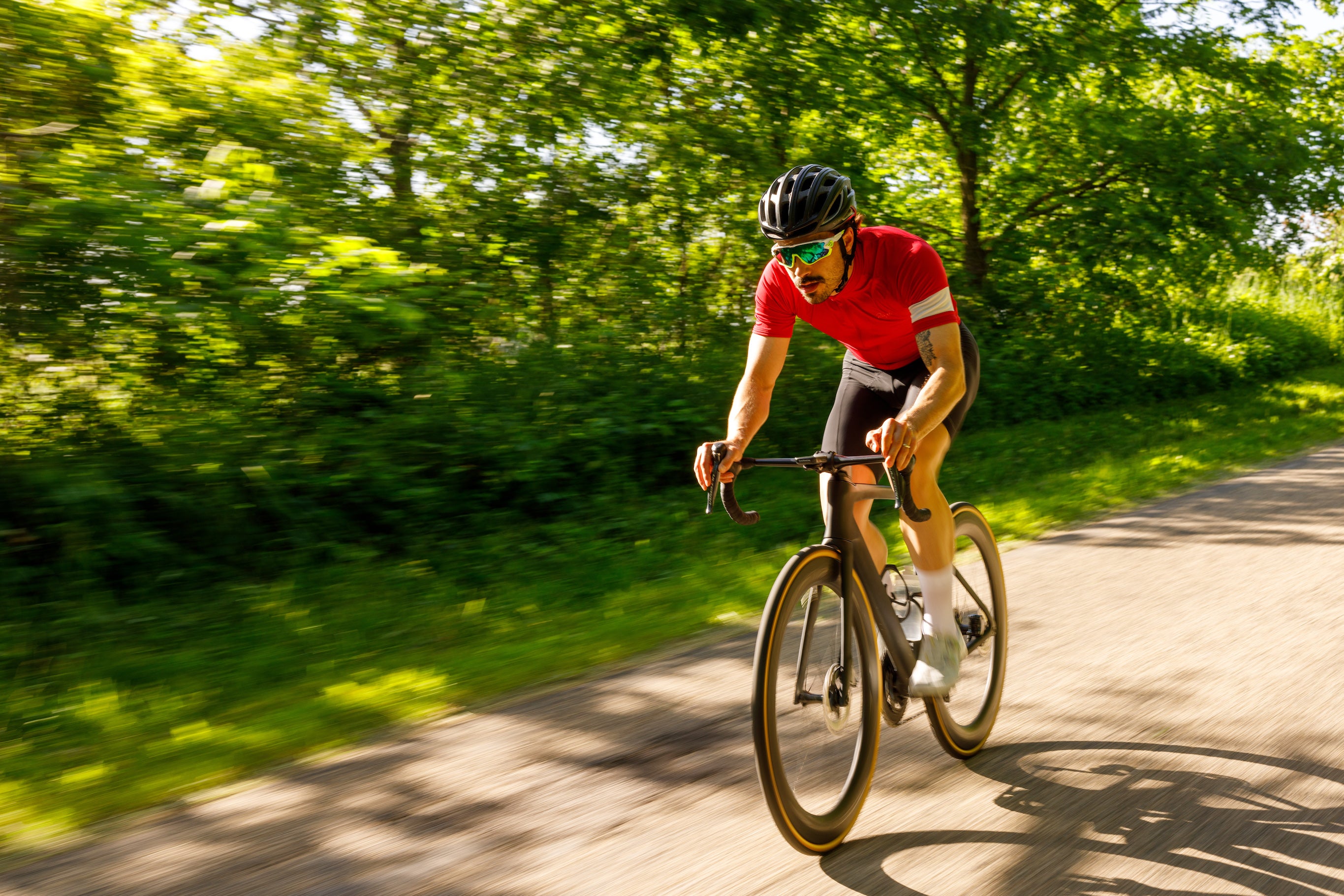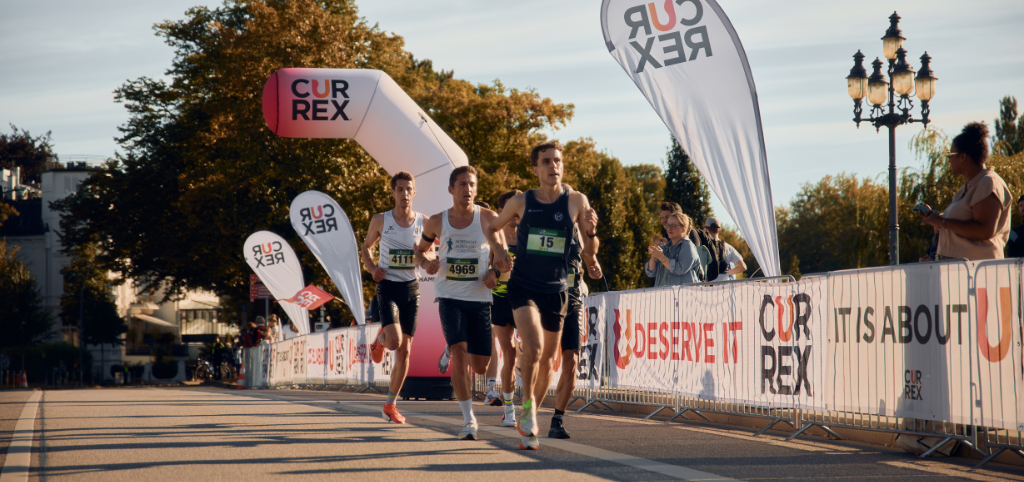UNDERESTIMATED RESERVE OF RUNNING ECONOMY

UNDERESTIMATED RESERVE: THE SECRETS OF RUNNING ECONOMY
When running, it is not only your metabolism that determines success and failure. More and more people are realising that the economy of the running movement also plays a major role - and can make a big difference even at the highest level.

The diagnosticians were amazed at their athlete's race results. They were used to an athlete occasionally running the marathon slower during a long-distance triathlon than they would have thought possible based on previous performance diagnostics: poor direct race preparation, nutritional errors during the race, incorrect pacing on race day or perhaps an infection - the range of possible reasons why things might not have worked out quite right on day X is huge. But for someone to run a marathon after 3.8 kilometers of swimming and 180 kilometers of cycling 20 minutes faster than their metabolic physiology should allow? That's crazy.
Same performance, more speed
This has happened to the sports scientists of the STAPS training institute based in Cologne and Hamburg. In their diagnostic procedures, the experts determine physiological parameters from which they derive how fast an athlete should be able to cover a certain distance under optimal circumstances. There was only one person they always underestimated: Jan (name changed) ran the marathon on the triathlon long distance several times about 20 minutes faster than the experts had predicted by their diagnostics eight weeks before the races. It seemed unlikely that he would improve so much in terms of metabolic physiology within these last few weeks of training - especially since Jan was already performing at a high level in all three disciplines.
The sports scientists came across the solution when they ordered Jan to the laboratory for a diagnostic test a few days before a long-distance race. There they saw confirmation: There had been little change in Jan's aerobic capacity, i.e. maximum oxygen uptake capacity, as well as in his body weight and lactate formation rate, which the STAPS Institute determines in its diagnostic procedure. "Jan had neither become lighter, nor was his musculature capable of generating much more energy than it had eight weeks earlier," recalls Björn Geesmann from the STAPS team. But one thing had changed: "Jan's body needed less energy to run at a certain speed. So he had to use less power for the same speed." Jan's running economy had improved greatly.
Lack of self-evidence
Running economy is a measure of how efficiently a runner moves - how much of the energy spent is invested directly in effective propulsion and how much is wasted through unnecessary or physically unfavourable movement patterns. It can be expressed scientifically in different ways. In STAPS, the experts look at the amount of oxygen an athlete takes in at a certain speed: Taking into account the respiratory quotient, which can be used to determine the proportion of fat and carbohydrates the body uses for energy production, the sports scientists can thus provide information on the efficiency of the exercise. This is expressed in millilitres of oxygen absorbed per kilogram of body weight. This value is put in relation to the running speed in metres per second, because as the running speed increases, the athlete's oxygen turnover also increases, because his body then has to produce more energy. The less oxygen and thus energy a body consumes at a certain pace, the longer the athlete can maintain this pace.
In the other two triathlon disciplines, this way of looking at things is almost self-evident: the average triathlete is usually painfully aware that in swimming, the use of power does not mean propulsion - it is also crucial to bring this power into the water in a targeted manner and not to slow oneself down through an unfavourable position in the water. In cycling, the movement control is fundamentally simpler, but the reduction of air resistance through the most favourable position possible on the bike is one of the favourite topics among triathletes. It is only in running that this way of thinking has not yet caught on. Everyone has their own running style, is usually the argumentation.
Huge potential
If running were exclusively about metabolic performance, we could also determine marathon winners by simply testing the athletes' oxygen uptake capacity," says sports scientist Liesa Fialkowske. "In fact, we would see in such a test that the race is often not won by the person who has the greatest capacity on paper" - which is mainly due to the running economy of the athletes. Fialkowske knows what she is talking about: The Hamburg-based company Currex sells measurement technology and soles and trains movement analysts. For three years now, the Currex team has also been analysing running movements with a 5-D method: Two Kinect cameras, such as those used in the Xbox game console, provide a 5-D evaluation of a test person's running style after a thirty-second recording. In the background, a system fed with data from a large number of runners uses various parameters such as the point of foot strike, stride frequency or hip and knee angles to calculate how efficiently a runner is moving. Since oxygen uptake is not recorded in this method, efficiency is expressed by the amount of energy in joules needed to move one kilogram of body weight forward one metre. Meanwhile, watt measurement systems could also provide information about running economy.

The Currex system then divides athletes into efficiency classes: The most efficient runners analyzed in the broad data set needed less than 2.7 joules per kilogram, while the most inefficient needed more than 3.45 joules for the same distance. At STAPS, too, they already have empirical values on how large the economy margins are. "The most inefficient values we see are over 15 millilitres of oxygen per kilogram of body weight and meters covered per second. The best remain below 8 milliliters," says Björn Geesmann. This means: "A runner with very good efficiency consumes half as much energy for the same speed as a runner with poor efficiency", although a runner does not run equally economically in every speed range. What these figures mean was demonstrated by the long-distance runner Jan: eight weeks before the competition, his efficiency values were 11.25 milliliters. With a maximum oxygen uptake capacity of 75 millilitres per kilogram of body weight and the assumption that Jan could run the marathon at an intensity of around 60 percent of maximum oxygen uptake (i.e. 45 millilitres), this meant that Jan could run at a pace of around four meters per second (= 45/11.25) or 4:10 minutes per kilometer. Immediately before the race, however, his efficiency at race pace had improved to 10 milliliters per kilogram and meter per second. His performance potential therefore increased to four and a half meters per second (= 45/10) or 3:42 minutes per kilometer.
Short at the front, long at the back
This is actually good news, says Liesa Fialkowske: "Many athletes can become significantly faster by working on their running style - and this is much less strenuous than normal training," she says. For runners, it's all about reducing the forces that slow them down and conserving as much kinetic energy as possible. "The most efficient way to do this is for the runner to keep the stride forwards very short," explains Fialkowske: "After a powerful push-off backwards with the leg as straight as possible, the runner pushes the foot towards the buttocks. With the knee lift, the lower leg swings down and the foot touches down under the runner's center of gravity - the point at which you balance yourself when standing on one leg. This results in a flat foot strike, a short ground contact time of the foot and a high frequency of around 180 steps per minute in the ideal case. With this style, the muscles are automatically pretensioned and can optimally convert the energy that the body experiences into propulsion. In contrast, when triathletes often run on their heels, the foot touches down far in front of the body's center of gravity, which means that the athlete first brakes themselves after landing and then has to accelerate again - which costs more energy than simply staying in the "flow".
To practise this, Fialkowske uses a trick in the Currex lab: she places a metronome next to the treadmill that ticks 180 times a minute so that the athletes only have to keep their stride frequency in time; when running outside, similar effects can be achieved by listening to music with 180 beats per minute. In addition, the upper body should be slightly tilted forward. The centre of the body should move up and down about eight centimetres while running in order to be able to optimally utilise the forces at work - which is almost automatic with the right stride frequency. "If you are not used to this, the change is of course strenuous at first, until the new coordinative movement patterns are consolidated or reprogrammed," says Fialkowske. With appropriate training - i.e. regular running abc and strengthening exercises - significant improvements in economy could be achieved within four weeks.
Controversial shear forces
According to the Currex system, however, an economical running style does not automatically mean that this style is also healthy: depending on angles in the knees and hips, for example, as well as an overly erect upper body, an athlete may be able to run very efficiently, but nevertheless there could also be large forces and moments acting on joints, which the analysis also assesses. "It is important to find a balance between economical and gentle running," says Fialkowske: without applying a certain vertical force, one cannot demonstrate an economical running style.
And there is another problem with economic measurements: efficiency is only recorded over a short period of time. "The way someone starts running says little about how the whole thing looks after 30 kilometres. It is therefore important that an athlete trains enough muscular stability in the torso, for example, to maintain his or her style," says Björn Geesmann. Triathletes must also choose the seat and pedal board position so that the running muscles are not already exhausted after cycling.
Maximum strength and plyometrics
Basically, higher running distances also go hand in hand with greater economy," says Geesmann: "If an athlete regularly runs 80 kilometres a week, the body looks for a way of moving that saves energy. An analysis of the British athlete Paula Radcliffe provides evidence that this is true: data from her show that her oxygen uptake capacity hardly changed between 1992 and 2003 - experts believe that the fact that she nevertheless became faster and ultimately ran a marathon world record is primarily due to increased running economy.
Several studies have also shown that maximum strength training can improve running economy in highly trained runners. In an Italian study, for example, experienced runners achieved a five percent improvement in economy within a few weeks with a leg exercise performed once a week, without gaining muscle mass. According to various authors, this is partly due to beneficial neuromuscular adaptations through this training method - and possibly also to increased tendon stiffness: analyses show that faster running ability is often accompanied by increased stiffness of the Achilles tendon and reduced mobility in the lower back and hip area. In addition to maximum strength training, Geesmann says that plyometric exercises are also a good way to achieve corresponding adaptations.
Important stiffness
"Let's take a foam ball and a leather ball. Both weigh half a kilo and are dropped from the identical height," says Geesmann. "But the leather ball bounces back higher because its material is more rigid and therefore returns more elastic energy." It's similar with the Achilles tendon, for example, which acts like a "spring" with a certain stiffness. A somewhat less flexible hip and lower back musculature may also have a stabilising effect, so that less energy is wasted in rotational movements, say the scientists - but they do not advise skipping flexibility exercises in the future because excessive immobility could promote tendonitis and other injuries. "You should therefore stretch well," says Geesmann - also in order to be able to pull the stride backwards. But being flexible like a "contortionist" is not something a runner should strive for.
The principle of energy recovery has also arrived in the shoe industry. Manufacturers are increasingly relying on material that not only makes shoes lighter, which can improve economy, but that is also supposed to return the absorbed energy to movement in a similar way to stiff tendons.
Of course, behind many sweeping promises is primarily marketing - but the basic idea behind it is well-founded and now confronts the sport with the difficult question of how much spring a running shoe can actually have.
Provide variety
Geesmann therefore recommends that athletes who already train relatively large volumes of, for example, 15 hours per week, replace one unit with two 30-minute maximum strength training sessions per week in winter. "In addition, functional athletic training that also addresses the deep muscles - and leg axis training that can also be linked to plyometric exercises in the form of single-leg jumps - helps," advises Fialkowske.
Leg axis training should also be carried out on unstable ground - and running training should not always take place on the flat. Running uphill can also help to improve running economy. Runners tend to tilt their upper body forward when running uphill and straighten it more when braking on steep inclines. These experiences could also help on the flat - and according to the STAPS experts, they were probably one of the main reasons why Jan improved his running economy so much during the last training phase. "We found that micro-intervals and hill runs had a very positive effect on his economy, while running abc had less of an effect," says Geesmann. So the one perfect economy exercise for everyone still doesn't necessarily exist - nor does the perfect running technique that all triathletes can also implement. But that doesn't mean it's not worthwhile to at least work on it.








